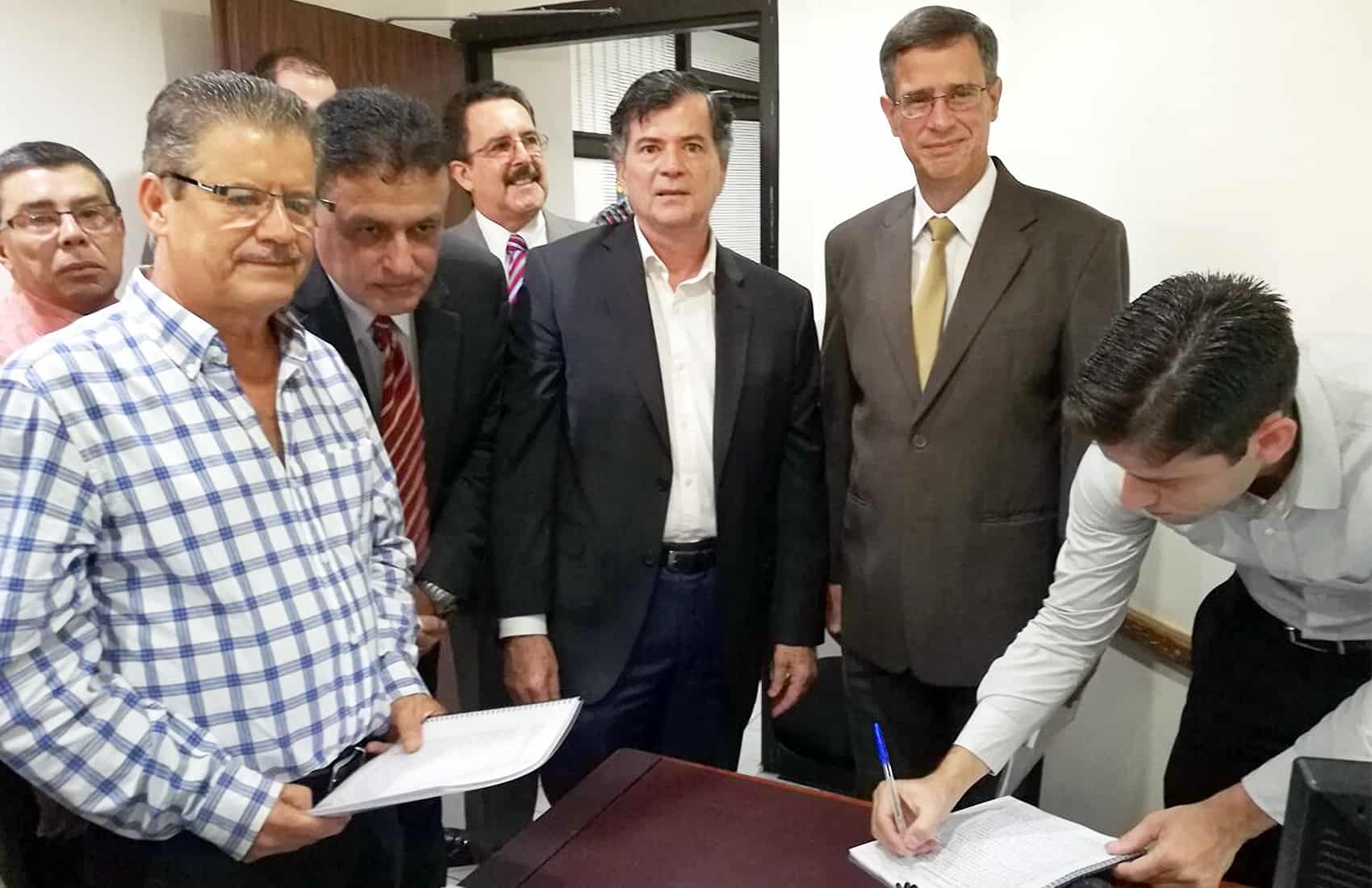The group “Nueva Constitución CR” (New Costa Rican Constitution) submitted a request Monday to the Supreme Elections Tribunal (TSE) to collect signatures across the country to hold a public referendum on drafting a new Constitution.
The group includes college professors, lawyers, entrepreneurs, citizen activists, writers, lawmakers and politicians from various parties. Among them is former President Luis Alberto Monge Álvarez, the last surviving member of the Constituent Assembly that drafted and approved Costa Rica’s current Constitution in 1949.
Monge, who presided over the country from 1982 to 1986, was recently released from the hospital after recovering from a respiratory arrest.
Former Comptroller General Alex Solís Fallas drafted the proposal presented Monday to TSE President Luis Antonio Sobrado. Solís said the initiative seeks to overcome “Costa Rica’s current crisis of governability in a peaceful, inclusive and democratic manner.”
He said the plan does not represent the interests of any political party, though several current and former politicians are involved, and that it aims to improve the quality of life of all Costa Ricans and make public administration more efficient.
Proposal for forming Constituent Assembly
The proposal delivered Monday requests TSE’s authorization to begin collecting at least 160,000 signatures — the required 5 percent of registered voters — in order to hold a referendum.
If approved, citizens would vote “Yes” or “No” to hold a national election for appointing 61 citizens to a Constituent Assembly for drafting and passing a new Constitution.
The election would be open to members of political parties registered with the TSE, along with members of workers’ unions, cooperatives, environmental groups, business chambers and professional associations.
Under the proposal, any citizen who is not part of one of these groups could also run as long as he or she can got the support of at least 20,000 registered voters.
If enough voters sign the petition, the election would take place the first Sunday of July 2019. Elected members of the Constituent Assembly would take office in November that same year and would have 20 months to draft and approve a new Constitution.
If the plan gets that far, the new Constitution would enter into force on Sept. 15, 2021 to coincide with the 200th anniversary of the Central American nations’ declaration of independence from Spain.
Solís said he believes a new Constitution is urgently needed because the country has become stagnant.
“The last time our country saw a major achievement was the construction of the National Stadium, and it was a gift from the Chinese, and built entirely by them,” he said Monday.
Solís told attendees at the TSE presentation that all candidates aspiring to a seat at the Constituent Assembly must promise the Costa Rican people to not eliminate or diminish rights established in the current Constitution, “especially those of social content or associated with private property,” he said.
Nueva Constitución CR leaders believe a new Constitution should preserve current citizens’ rights and add new chapters, among others, related to civic responsibilities. They also believe it should add provisions to ensure greater protection of natural resources and should declare the state secular (Catholicism is the official state religion under the current Constitution).
The proponents also want to decentralize the government’s power with the aim of improving its administrative structure and management of public affairs.
History of Costa Rica’s Constitutions
Members of the Nueva Constitución CR group believe the 1949 Constitution is outdated and doesn’t represent the country’s current reality.
Costa Rica drafted its first legislation as an independent republic in 1821. Presidents and lawmakers later amended and added new laws that resulted in the country’s first Constitution in 1871.
After President Rafael Calderón Guardia was overthrown during the 1948 Civil War and a governing board headed by José Figueres Ferrer took office on May 8, 1948, Figueres immediately restored some chapters of the 1871 Constitution.
On Sept. 3, 1948, the governing board convened elections for a Constituent Assembly that appointed a group of lawmakers to draft a new Constitution.
On Nov. 7 1949 the Assembly adopted the new Constitution, which is still in force.
Members of the Nueva Constitución CR describe the 1949 Constitution as a polished version of the one approved in 1871, and therefore long outdated.
“Instead of fixing the situation, we’ve been amending and creating new rules. As a result, to live and develop in our country has become very difficult,” the group stated in its principles.
But the 1949 Constitution also includes some of the country’s most celebrated characteristics, like the abolition of the army.
It lays out individual, social and political rights and duties, the separation of powers of the government’s three branches, and the structure of public agencies.
According to Legislative Assembly records, the 1949 Constitution has been amended 62 times since its approval. Currently, there are over 40 bills pending approval aimed at amending the wording of 61 articles of the Constitution.

